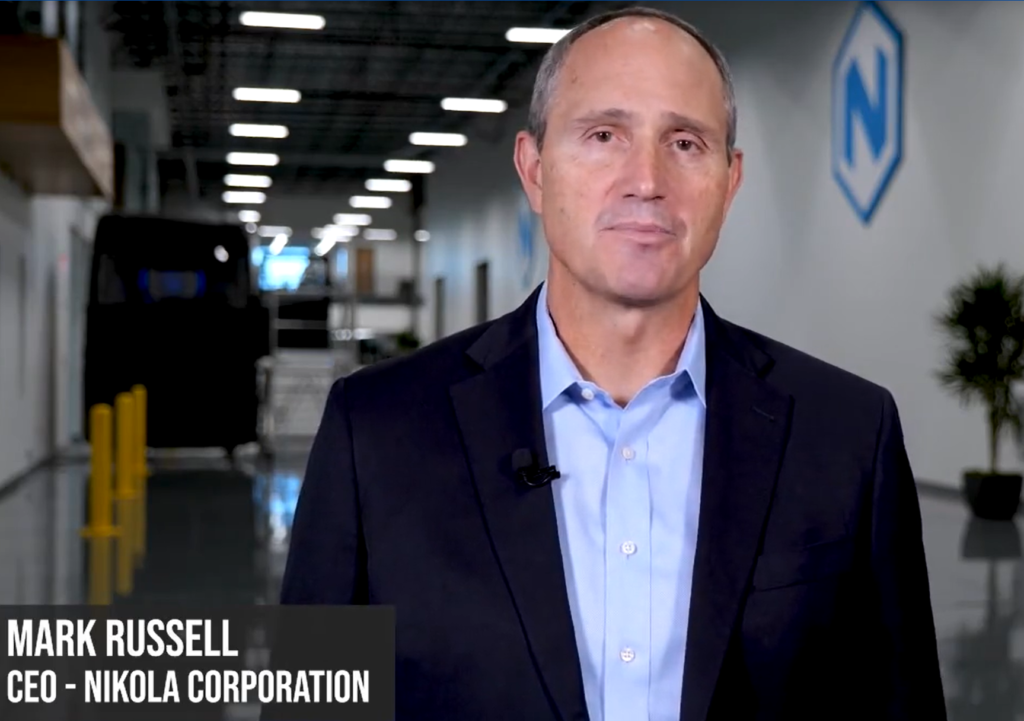Nikola continues to see battery-electric and hydrogen future
TORONTO, Ont. – Nikola Motor remains committed to producing battery-electric and fuel-cell-electric trucks, with its eyes on several pending targets for the year to come.
“Nikola has been focused on building the truck of the future and the ecosystem to support it,” president and CEO Mark Russell said in a pre-recorded keynote presentation for the online ACT Virtual summit.

“The truck of the future starts with a battery-electric powertrain,” he said, adding that hydrogen fuel cells build on that with the capability of hauling heavy loads over longer distances.
Battery-electric prototypes of the Nikola Tre being developed in a partnership with Iveco, for the European market, are approaching completion, and serial production is planned for 2021, he said. Here in North America, work is underway to establish a new production facility in Arizona, while European manufacturing will be based in Ulm, Germany.
The company has also committed to testing a pre-production version of the hydrogen-electric Nikola Two in 2021.
But Nikola has undeniably faced several recent challenges in the journey.
Founder Trevor Milton stepped down from his role as executive chairman in September, less than two weeks after Hindenburg Research, a short-selling firm, accused Nikola of engaging in an “ocean of lies” to secure partnerships with OEMs including General Motors.
Nikola has disputed the allegations.
Targeting carbon emissions
The company stresses that zero-emission vehicles will play a key role in various environmental goals.
Transportation-related carbon emissions have over the last 30 years grown faster than any other segment of the economy, Russell said in his presentation.
“The rest of the world has gradually woken up to the fact that we’ve got to get rid of fossil fuels.”
Russell showed a chart representing several global commitments to ban internal combustion engines. (While the graphic suggested Canada plans to phase out fossil fuels by 2040, that target is specific to B.C.)
While California remains a leader in U.S. commitments to reduce emissions, other states are looking to meet or surpass its targets, he said, offering the example of 15 states and the District of Columbia that want all medium- and heavy-duty vehicles to be zero-emission models by 2050.
Russell acknowledged the “chicken and egg” challenge of building fuel cell vehicles before a hydrogen fueling network is in place.
For its part, Nikola’s approach involves combining truck costs, maintenance and fuel into a single payment model.
In North America it has committed to building more than 700 hydrogen stations with fast-charging for battery-electric vehicles, and it’s also looking to roll out a fuel network in Europe, beginning with Germany and low countries.
“We’d like any truck to fuel with any station anywhere in the world,” he said.
The would-be manufacturer has also joined a consortium including Toyota, Hyundai, Shell, and Air Liquide to standardize the fueling infrastructure.
Russell stressed the safety of the fuel, already used as an industrial gas and in the aerospace industry.
“With proper preparation – proper engineering, design and procedures – hydrogen can be very safe,” he said.
Have your say
This is a moderated forum. Comments will no longer be published unless they are accompanied by a first and last name and a verifiable email address. (Today's Trucking will not publish or share the email address.) Profane language and content deemed to be libelous, racist, or threatening in nature will not be published under any circumstances.